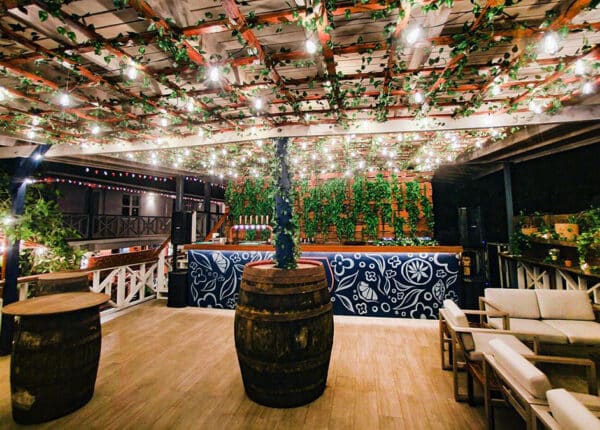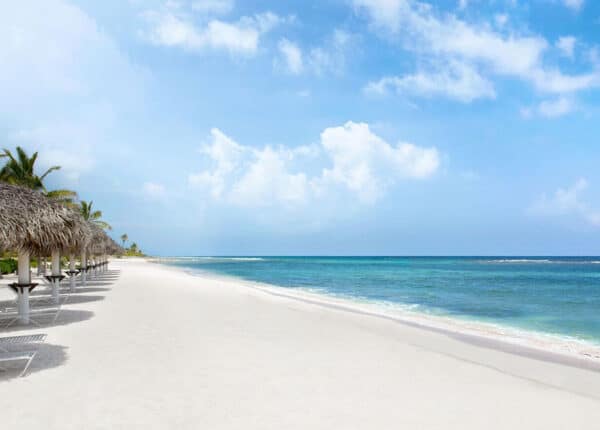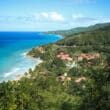By Nigel Spence
CJ Contributor
ON MY RECENT JOURNEY of travel, self discovery, food and back roads, I found myself deep in the jungles of Costa Rica.
How I ended up there is a long story, but what I heard about and wanted to explore was that the Caribbean side of Costa Rica had its roots firmly planted in Jamaican heritage.
Based on my research, I came to realize that this was also the case for most of the East Coast of the Central American countries including Nicaragua, Panama and Honduras.
What became apparent while surfing the Internet, is that not much is written about this fact. Except for a few travel blogs, which mention that you may encounter more people of Afro-Caribbean heritage on the East Coast, with Jamaica being the predominant influence, there isn’t much information out there.
The major differences in culture, food and the vibe are all but absent from the brochures and tourist information sites. At the risk of getting too political about this fact, I will just say that it seemed as if the Caribbean side of the nation has been marginalized when compared to the information readily available about the Pacific West Coast. Based on this realization, I felt that I owed it to myself to go and explore the missing links.
What I found on the Caribbean Coast was lush green country, a beautiful jungle full of unforgettable views and sounds that mesmerized and kept astonishing me over and over again.
The town of Puerto Viejo, sitting almost at the tip of the south of the Caribbean Coast was like coming home to Negril.
The laid-back vibe and the English speaking locals made me immediately feel at home. Their lilt had a trace of Patois and made me smile every time I encountered them. Meeting and talking to locals was easy; making friends, even easier.
I was introduced to their families, heard their histories and shared their meals. Some had come generations ago and settled there, others were not fully knowledgeable of their history or how they came to sound so “different” from their Pacific-dwelling nationals.
The town of Puerto Viejo showed me its lazy side, with its beaches, super fresh seafood, and seemingly relaxed population and mimicked a Jamaican beach town – exuding the same welcoming “irie” vibe.
Along the back roads, driving through the bush, you find cozy food spots that leave you in awe with their graciousness and simple ways and win you over with their easy but good food; in particular, black beans and rice. Everyone has their own “best recipe” and method for preparing beans and rice, or gallopinto as it is called locally. As a matter of fact, it is considered their national dish. It is found on the Costa Rican table at breakfast, lunch and dinner, and even works as a snack. It is served with meat, with seafood, with eggs or as a standalone dish. It is everywhere.
While driving through the hills, I came upon a little food shack that sat precariously close to the edge of the mountainside and which turned out (in my opinion), to be the best rendition of black beans and rice I had ever experienced.
It had the right combination of heat, aromatics and freshness that came together to make a winner. I immediately recognized a strong showing of cilantro, or probably the more pungent version known in those parts as culantro or shadow beni in the English speaking Caribbean.
There were hints of onion, parsley, red peppers and garlic. I ventured to ask about the actual ingredients and how the dish was made. As it turned out, this particular cook was from the Pacific side and English was not part of her training. Neither one of us was deterred by the fact that she did not speak a lick of English. Armed with a vague and distant Spanish vocabulary, I proceeded to have a full on conversation.
With a bit of gesturing and the use of Spanglish-type words, I was able to extract most of the ingredients and a good portion of the method of preparation during our exchange. In the end, all parties ended up satisfied with what they get out of that “labrish.”
She – a new food shack “groupie,” who bought and devoured EVERYTHING she put in front of me, and I – a new and favorite recipe for my collection.
I truly cherished the few days that I had to explore Costa Rica and promise to return to learn more about this “lost heritage.”
The following is my interpretation of the black beans and rice dish that I had at “my favorite food spot” on a side of a road that had no name. Since most of us are not lucky enough to have lazy weeknights as part of our daily lives, I modified the recipe to make it more approachable and easy enough to fit our hectic schedules.
The original recipe called for dry uncooked black beans which are time consuming to prepare. I substituted with a good quality brand of canned beans, which cut the preparation time significantly. The Costa Ricans use vegetable oil or more expensive olive oil, but my preference for flavor is coconut oil. I also used scotch bonnet peppers to add a little zing to the palate.
JUNGLE BEANS & RICE
3 ¾ cups water
2 cups long grain white rice
1 (One) 12 oz can black beans (drained and liquid reserved)
1 cup culantro roughly chopped (also known as shadow beni or substitute with cilantro)
½ cup Spanish onion small dice
¼ red bell pepper (small dice)
¼ cup coconut oil
½ tablespoon garlic (finely minced)
½ teaspoon scotch bonnet pepper (finely chopped)
½ tablespoon salt
METHOD
Heat coconut oil in medium size sauce pan over medium heat. Add red bell peppers and onions, cook for 3 minutes until softened. Add garlic, ½ cup culantro, scotch bonnet pepper and cook for 1 more minute. Add the rice and stir until rice is coated with oil and incorporated with the vegetables. Add the reserved liquid from the black beans and continue to stir. Add water and salt. Increase the heat to high until water comes to a boil. Turn down to low heat, cover and allow rice to steam for 20 minutes as you would for making regular white rice. After all the water has evaporated and rice has been cooked and is tender, add the black beans on top and cover, cooking again over low heat for additional 5 minutes. Remove from heat and add the remaining ½ cup of culantro and stir to fully incorporate beans and culantro into the rice. Adjust the salt to your personal taste. Serve piping hot as a main dish or as an accompaniment to a hearty meat dish.
Nigel Spence, a Culinary Institute of America alumnus, was born in Kingston, Jamaica. Nigel freelanced at the Television Food Network for three years where he worked with culinary luminaries such as Mario Batali, Bobby Flay and Emeril Lagasse. Chef Spence has appeared twice on Throwdown with Bobby Flay where he emerged the victor in cookoffs against the Food Network star and was featured on CBS when he appeared on Tony’s Table as well as ABC’s Neighborhood Eats, NBC’s The Today Show, Sirius’ Everyday Living with Martha Stewart and TVFN’s Chopped. The acclaimed and New York Times-reviewed Ripe Kitchen and Bar is Mr Spence’s first entrepreneurial endeavour.







